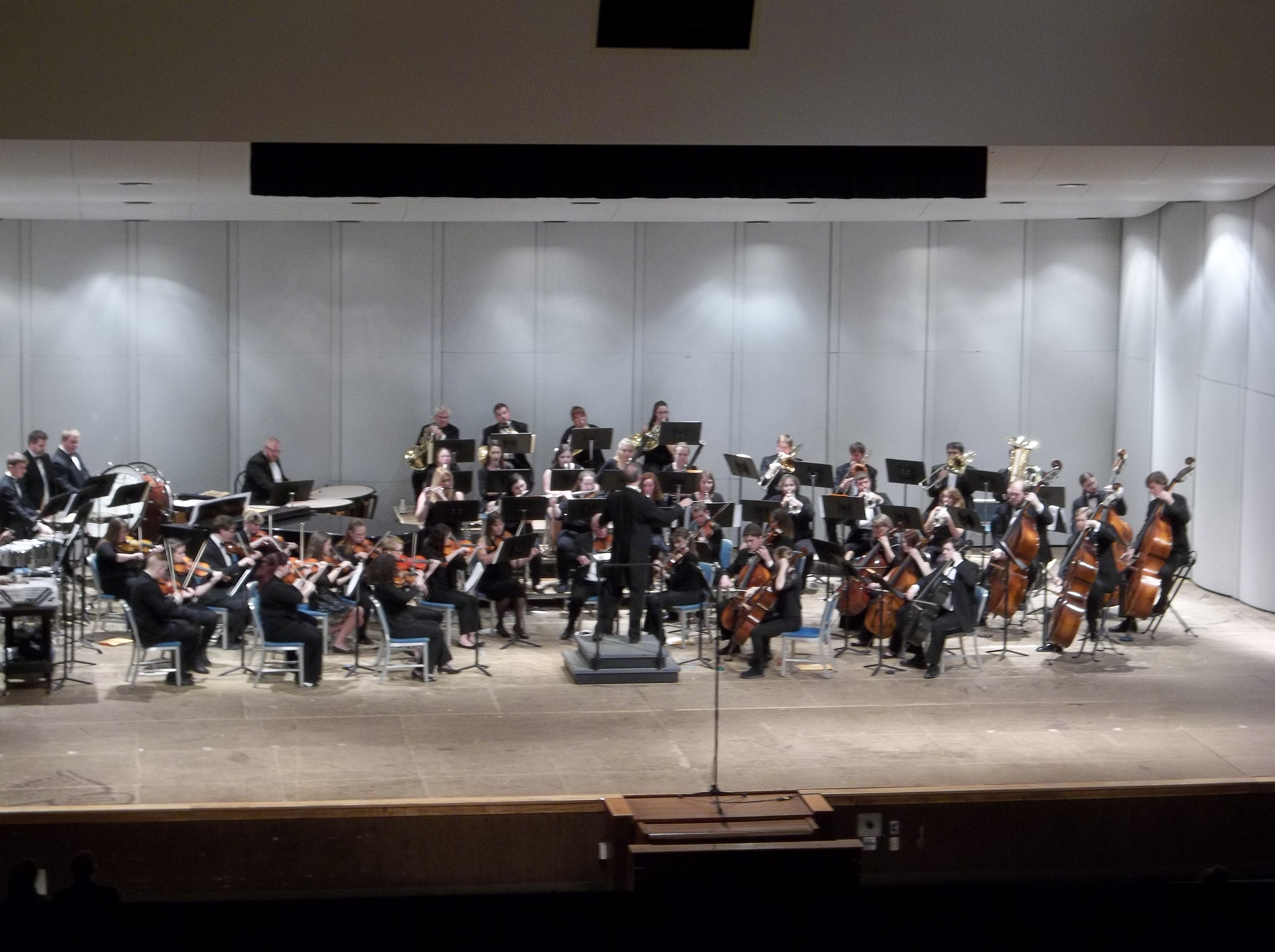 The Clarion University Symphony Orchestra will present a concert at 3 p.m. Sunday,
Dec. 9, in the Marwick-Boyd Auditorium. Under the direction of Dr. Casey C. Teske,
the theme of the concert is "An Afternoon of Opera," which presents various orchestral
compositions from the vast opera repertoire. The symphony orchestra is joined by special
guest artist The Stellare String Quartet.
The Clarion University Symphony Orchestra will present a concert at 3 p.m. Sunday,
Dec. 9, in the Marwick-Boyd Auditorium. Under the direction of Dr. Casey C. Teske,
the theme of the concert is "An Afternoon of Opera," which presents various orchestral
compositions from the vast opera repertoire. The symphony orchestra is joined by special
guest artist The Stellare String Quartet.
The concert opens with Johann Strauss's "Overture to Die Fledermaus" ("The Bat"). The structure of this short opera is similar to that of a Broadway musical, in that spoken dialog is common. The Overture provides a potpourri of several principal tunes from the operetta dominated by a simple dance number and an infectious waltz.
The next piece is Aaron Copland's "Hoe-Down" from "Rodeo," which is a ballet set on a western ranch. In this piece, Copland quotes two famous square-dance tunes, "Bonypart" and "McLeod's Reel" to help impart a lively rural atmosphere.
"Triumphal March" from the opera "Aida" by Giuseppe Verdi ends the first part of the Symphony Orchestra program. The opera is based on a classic love triangle and the march is from the most famous scene of the opera. A trumpet fanfare leads to the main march material representing the victorious Egyptian Army as it approaches the King's throne.
The Stellare String Quartet will start their portion of the concert with Puccini's "O Mio Babbino Caro" from "Gianni Schicci," which is about a feud between the suitor and father of the heroine. Next, Jules Massenet's "Meditation" from "Thadis" highlights a very famous concertmaster solo followed by "Habanera" from the very Carmen by Georges Bizet. The quartet will end with "Der Vogelfanger" from Mozart's comic opera "The Magic Flute."
The second half of the orchestra program opens with Georges Bizet's "L'Arlésienne Suite No. 2." The first movement, "Pastorale" begins with broad thematic material that is broken by a faster Spanish dance before returning to original material. The second movement, "Carillon," is a wedding celebration complete with bells and a festive mood, and "Farandole" ends the suite with a return of the opening theme of the "Prelude" to the first suite as a canon eventually combining the two themes at the end.
The next composition is "Grand March" from Richard Wagner's "Tannhäuser." The inspiration for Wagner's opera "Tannhäuser" is an actual medieval singing contest held at Wartburg Castle in 13th-century Germany. The "Grand March" is heard in Act II as richly attired noblemen enter and assemble for the contest.
The final piece of the concert, "Light Cavalry Overture" by Franz von Suppé's is from a two-act operetta of the same name. The opening majestic fanfare leads to his most famous cavalry music followed by a dark expressive Hungarian passage returning to the original "cavalry" music.
The Symphony Orchestra is a premiere performing group consisting of the Clarion University community, including students, faculty, alumni, and residents of the surrounding area. The group is dedicated to the quality performance of standard orchestral repertoire and is typically joined by a professional guest artist for each concert.
The concert is free and open to the public.